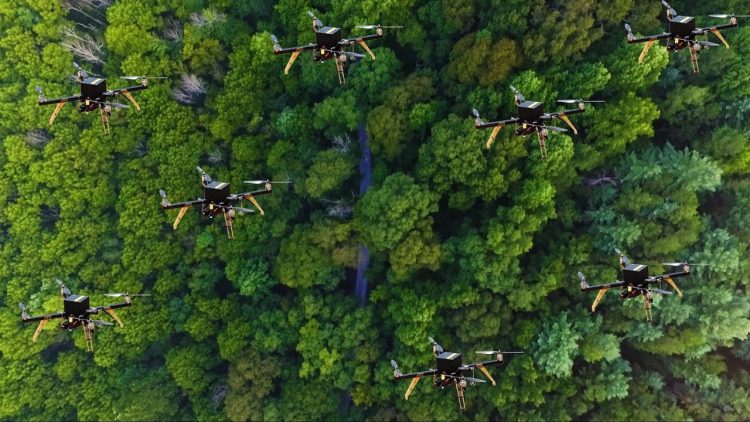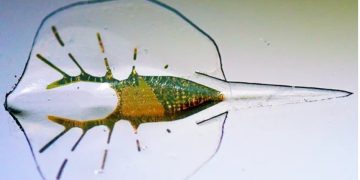Introduction: A New Era for Disaster Relief
In recent years, disaster relief operations have faced increasing challenges due to the growing frequency and severity of natural disasters. From earthquakes and tsunamis to wildfires and floods, the demand for rapid and effective response is higher than ever before. While traditional methods have served their purpose, they are often hindered by logistical limitations, human resource constraints, and the difficulty of navigating dangerous and unpredictable environments. This is where swarm robotics—autonomous robots working together in large groups—could provide a game-changing solution.
Swarm robotics, inspired by the collective behavior of social organisms like ants, bees, and birds, offers a new paradigm in disaster response. By deploying fleets of small, intelligent robots that communicate and collaborate autonomously, disaster relief teams can enhance efficiency, reduce risks to human responders, and ultimately save more lives.
But can swarm robotics truly revolutionize disaster relief operations? In this article, we will explore the potential of swarm robotics in disaster management, examining its applications, challenges, and the future of this emerging technology.
The Basics of Swarm Robotics
Swarm robotics involves the coordination of multiple robots working together to accomplish a task. Each robot in the swarm operates autonomously but communicates with others to share information and optimize group behavior. The robots are often relatively simple and inexpensive, and their collective intelligence emerges from local interactions and simple rules.
Key characteristics of swarm robotics include:
- Decentralized Control: No single robot is in charge. Instead, each robot makes decisions based on its local environment and the information it receives from others.
- Scalability: Swarm systems can scale up easily, as adding more robots to the group typically doesn’t require significant changes to the system.
- Fault Tolerance: If one robot fails, the system as a whole can continue to function, as the swarm doesn’t rely on any single unit.
These features make swarm robotics particularly well-suited for disaster relief operations, where large-scale deployment, adaptability, and resilience are critical.
Applications of Swarm Robotics in Disaster Relief
Swarm robotics offers a wide range of applications that could dramatically enhance disaster relief efforts. Let’s look at some of the most promising use cases:

- Search and Rescue Operations One of the most urgent needs in disaster relief is the rapid identification of survivors trapped under rubble or debris. Swarm robotics could be deployed to quickly scan large areas, using sensors such as cameras, infrared, and gas detectors to identify signs of life. These robots could work in tandem to cover a larger area in less time than a single human responder or robot could manage. With their small size and ability to navigate through narrow gaps, they can access spaces that are otherwise inaccessible to humans or larger machines. Furthermore, swarm robots could collaborate to build a detailed 3D map of the environment, providing real-time data for rescue teams to prioritize their efforts.
- Supply Delivery and Logistics After a disaster, delivering essential supplies such as food, water, medicine, and medical equipment is crucial. Swarm robotics can facilitate supply chain logistics in challenging environments. Small drones or ground robots could autonomously transport supplies to hard-to-reach locations, such as remote villages, damaged infrastructure, or areas with collapsed roads. By working in teams, these robots can avoid bottlenecks and ensure that aid reaches its destination as efficiently as possible. They could also adapt to unforeseen obstacles, re-routing autonomously in response to changing conditions.
- Infrastructure Inspection and Assessment In the aftermath of a disaster, it is essential to assess the damage to critical infrastructure, including buildings, bridges, power lines, and roads. Swarm robots equipped with sensors could autonomously scan and evaluate infrastructure, providing real-time data for engineers and decision-makers. These robots could use visual, thermal, or ultrasonic sensors to detect cracks, structural weaknesses, or potential hazards, and communicate their findings back to human experts. This could significantly speed up the assessment process, allowing resources to be allocated more effectively.
- Environmental Monitoring and Hazard Detection In some disaster scenarios, such as chemical spills, wildfires, or nuclear accidents, monitoring environmental conditions is essential for both safety and recovery. Swarm robotics could be used to monitor air quality, detect toxic gases, or even measure radiation levels in hazardous zones. Using a fleet of small, mobile robots, responders could gain a clearer picture of the environmental risks and make more informed decisions. Swarm robots could also provide early warning systems, helping to mitigate further damage or loss of life.
- Communication Networks In disaster-stricken areas, communication infrastructure is often damaged or destroyed. Swarm robotics could establish temporary communication networks by deploying a fleet of drones or mobile robots to set up ad-hoc wireless networks. These networks could be used by both rescue teams and survivors to communicate, share information, and request assistance. By deploying multiple robots across a wide area, the communication network could be highly resilient, self-healing, and flexible.
Challenges and Limitations
While the potential of swarm robotics in disaster relief is vast, there are several challenges that need to be addressed before it can become a mainstream solution.
- Technical Complexity Developing the algorithms and systems required to enable swarm robotics is technically complex. Swarm robots must be able to communicate effectively, coordinate their actions, and adapt to rapidly changing environments—all in real-time. This requires sophisticated software and hardware that can operate in harsh, unpredictable conditions.
- Robustness and Durability Disaster environments are often dangerous and harsh, with extreme weather, unstable ground, and hazardous materials. Swarm robots must be robust enough to withstand these conditions and continue to function effectively. Ensuring that robots can operate for extended periods in such environments requires advanced power management, rugged design, and redundancy.
- Ethical and Security Concerns The use of autonomous robots in disaster zones raises important ethical and security questions. For example, how can we ensure that the robots are used for humanitarian purposes and not for surveillance or military applications? Additionally, there are concerns about the potential for hacking or cyberattacks on the robots, which could compromise their functionality or be used maliciously.
- Coordination with Human Teams While swarm robots offer numerous benefits, they must also work in tandem with human responders. This requires seamless coordination and integration into existing disaster response frameworks. Ensuring that robots complement, rather than replace, human responders is crucial to their success.
- Cost and Accessibility Developing swarm robotic systems can be expensive, and while costs are likely to decrease with time, widespread adoption may still be hindered by financial barriers. Furthermore, the deployment of swarm robotics may require specialized infrastructure, training, and support, which could be difficult for some regions to access.

The Future of Swarm Robotics in Disaster Relief
Despite the challenges, the future of swarm robotics in disaster relief looks promising. As technology continues to advance, swarm robots will become more capable, affordable, and accessible. In the near future, we can expect:
- Improved AI and Machine Learning: Advances in artificial intelligence will enable swarm robots to become even more autonomous and adaptive, allowing them to respond more effectively to dynamic disaster environments.
- Miniaturization and Efficiency: Smaller, more energy-efficient robots will make it possible to deploy larger swarms without overwhelming logistical or energy constraints.
- Global Collaboration: As the technology matures, we could see international collaborations between governments, NGOs, and tech companies to create global disaster response networks that utilize swarm robotics on a large scale.
- Integration with Other Technologies: Swarm robotics will likely be integrated with other cutting-edge technologies such as 5G networks, autonomous vehicles, and drones, creating a comprehensive disaster relief ecosystem.
Ultimately, swarm robotics has the potential to revolutionize disaster relief by enabling faster, safer, and more effective responses. While challenges remain, the technological advancements on the horizon offer great hope for the future of disaster management.
Conclusion: A Promising Future for Swarm Robotics in Disaster Relief
Swarm robotics represents a transformative shift in how we approach disaster relief operations. By harnessing the power of autonomous, collaborative robots, we can enhance the efficiency of search and rescue missions, improve supply chain logistics, monitor hazardous environments, and provide critical communication networks when needed most. However, significant technical, ethical, and logistical challenges remain before swarm robotics can be fully integrated into disaster response strategies.
As research and development in this field continue to progress, we can expect swarm robotics to play an increasingly vital role in humanitarian efforts around the world. The future of disaster relief is on the horizon, and swarm robotics could be at the forefront of this revolution.












































